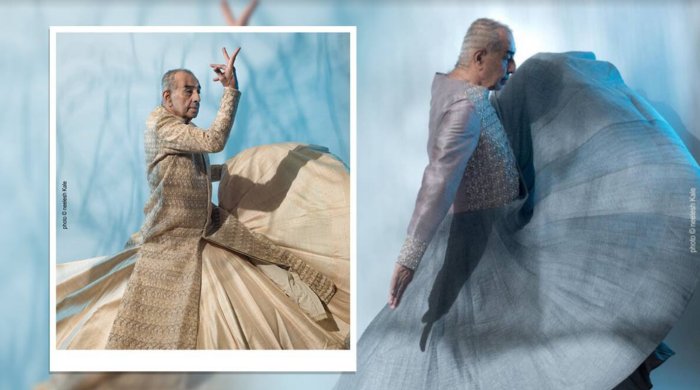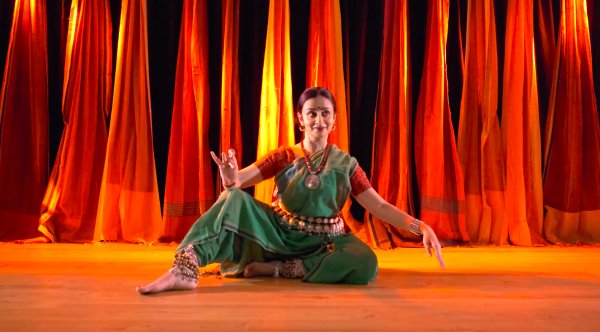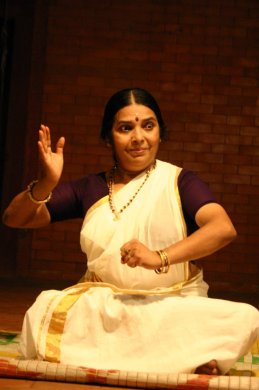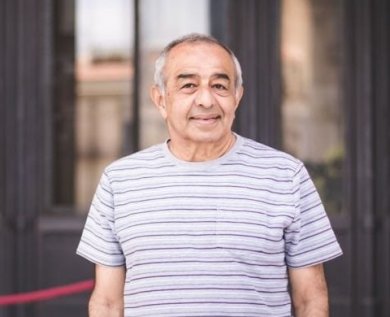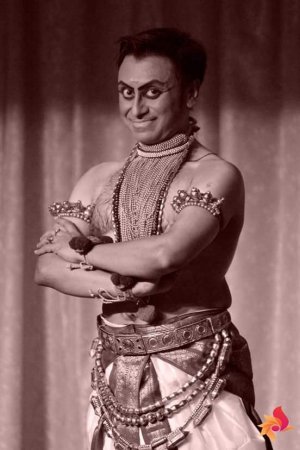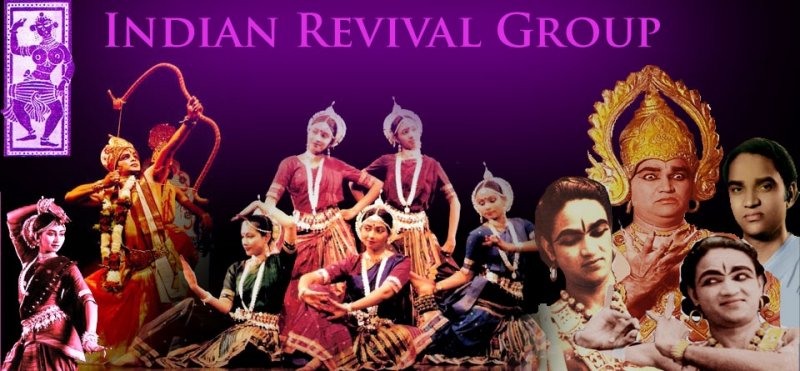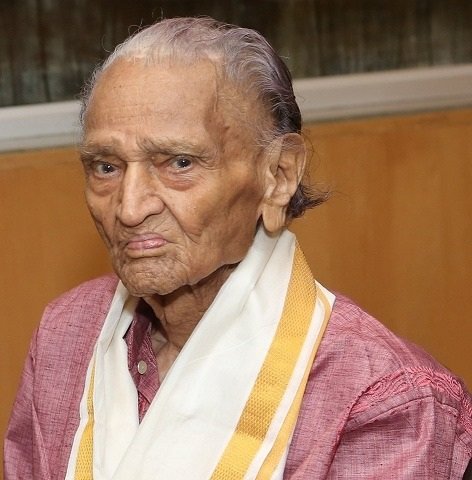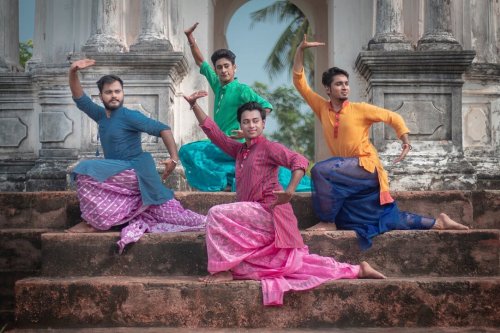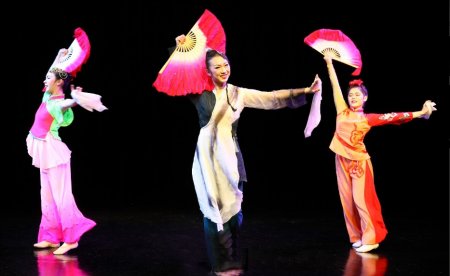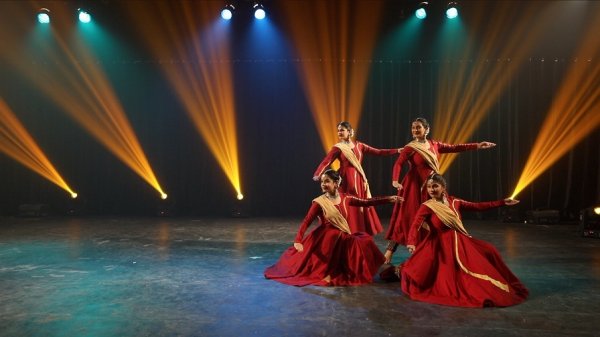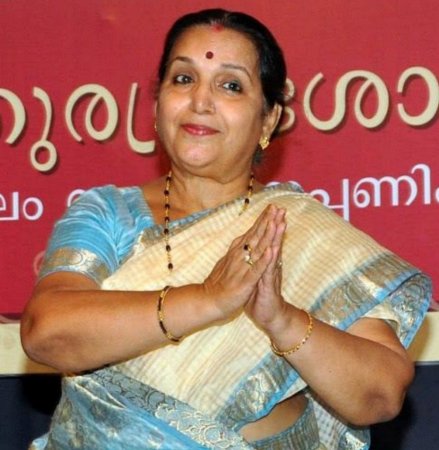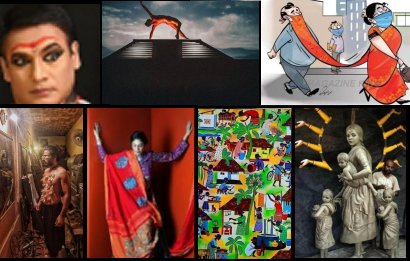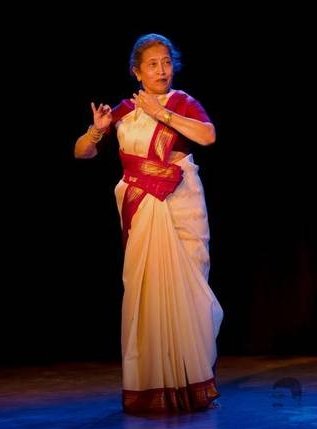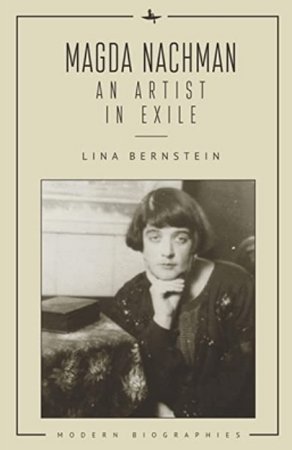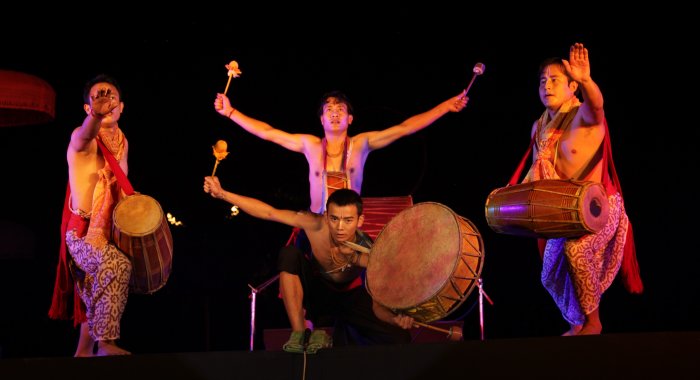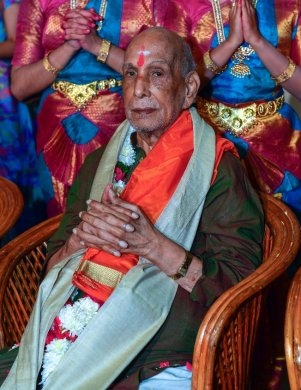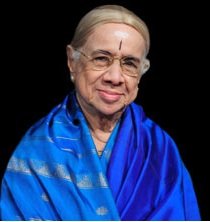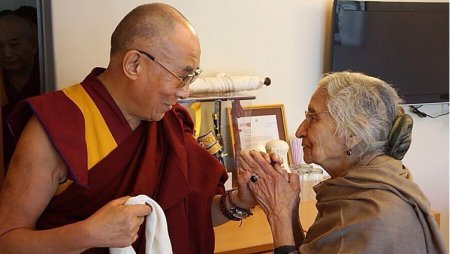Pl provide your name and email id along with your comment
Please type your name along with your comment. Anonymous and derogatory comments are likely to be removed.
Thursday, 31 December 2020
Obit/Tribute - Memorable tribute to a Master - G Ulaganathan
Wednesday, 30 December 2020
Obit/Tribute - In remembrance of Dr. Sunil Kothari - Deepsikha Chatterjee and Uttara Asha Coorlawala
Pl provide your name and email id along with your comment
Anita Ratnam and Narthaki.com present ANDAL'S GARDEN, Andal's TIRUPPAVAI 30, a series of curated performances celebrating the spirit and poetry of the only female Azhwar, Godai, for 30 days from December 16, 2020. These 30 poems or Pasurams, are brimming with imagery, imagination, and innovative metaphors influenced by the naturescapes of the Sangam era and Andal's own knowledge of the Bhagavatham.
ANDAL is for everyone. Her 9th century voice was among the earliest of the female mystic poets to flood this land. ANDAL'S GARDEN - where Carnatic music meets Kathak, Mohiniattam, Kathakali, Odissi, Kuchipudi and of course, Bharatanatyam. Original music, freshly filmed videos in the outdoor, shorn of extra ornamentation and focusing on the poetry and the mood of the Margazhi season.
Art by KESHAV - ©krishnafortoday & Keshav
Translations by Priya Sarukkai Chabria - 'ANDAL: Autobiography of a Goddess'
Sunday, 27 December 2020
Au revoir 2020, Welcome 2021 - Dance Matters: Column by Ashish Mohan Khokar
What a year! Whoever would've thought we will witness the most unusual and scary year, without even SEEING the enemy. Our parents had seen World Wars, their parents, perhaps the Spanish Flu; we living in North India faced the Partition and lost everything overnight (and still half my father's family survived and served India after independence, as Army doctors and COs) and my mother's side of the Kumbakonam-Kanchi family escaped (to Madanapalle) from Madras to avoid the possible bombing by the Japanese in WW2. I, growing up in Delhi, witnessed wars with Pakistan and China, but this 2020 INVISIBLE attack on the entire world was something evil, almost diabolical. Biological warfare has begun. All them American films on bio wars (there was a real bio attack in a Japan metro too, some years ago) now seem prophetic. The strangest part of the pandemic has been until now that all the scientists and medicos just mumbled inanities on TV, since none really knew what they were dealing with in the first place. One Delhi doctor, heading a prestigious national institution began every discourse with: So, we know this but we don't know that...As if, we already didn't know this and that. Now mutant ninja is here, from UK. 70% faster in transmission they say. Born in the USA (I learnt on KBC) but now the PM of UK, Boris - that man with a seemingly perpetual bad hair day - is slated to be the Chief Guest at our Republic Day, come Jan 26. Will he still come or comb India? More on this and that, later.
Pl provide your name and email id along with your comment
Sunday, 20 December 2020
Obit/Tribute - Drishtikon pays homage to Astad Deboo
What happens to the dance when the dancing body is no more? What happen to the love we shared, when - skin, muscle and bone have disintegrated - dust to dust?
Astad, your dance, your humanity, your generosity of spirit - and above all your courage and conviction to be the lonely trailblazer on the dance sky, will forever remain in our hearts and minds. Your dance and your life will inspire and give courage to many generations to come.
You are and will always be a part of our living mythology - your 'dance being' had so many stories to share.
The heart can only ache...and you touched so many. Your friends and fans across the world are devastated.
Just a few days ago your voice was positive about your recovery.
Just a few weeks ago, we were chatting about your latest photoshoot.
Just a few months ago, you shared your brilliant dance film made with your dancers over zoom.
Dec.10th, 2020 ...you are gone.
Belief is suspended. I am so so so sad
- ADITI MANGALDAS
Pl provide your name and email id at the end of your comment
Wednesday, 16 December 2020
Unable to travel home and adopting the digital medium, Sreyashi - groomed in Odissi and quite adept in creative style, running her own dance institution overseas for years -- felt moved to choreograph six of the vintage songs her father wrote in the 1950s, calling it A Daughter's Tribute to her Father, reversing the Nehruvian name! It was as moving an obeisance to her father's sprightly writings, as Vijaya Mehta's dramatic homage to Nehru has been in another time and clime! [Just a footnote here: The so-called Adhunik Gaan (Modern Song) genre of the 1950s' Bengal has long yielded to Jivanmukhi Gaan (Realistic Song), a kindred of the robust Western Pop Songs and hold popular imagination in Bengal in this millennium.]
Saturday, 12 December 2020
Profile - Nirmala Paniker - Venugopal SK
I came to know of Nirmala Paniker teacher, through a Facebook post by her disciple Sandra Pisharody. I remember it was the 70th birthday of her teacher that Sandra dedicated a beautiful composition honoring her Guru. It was a marvel of a performance that you seldom get to see with so much perfection in the movements and abhinaya. I was so impressed by her dancing skills that I did a small research to find out more about her and her school of learning. Thanks to FB, I could further establish contact with the artiste and came to know as to how from the age of 5 she was learning from Nirmala Paniker (almost like under Gurukul system). I took the phone number of her guru and spoke to her followed by a visit to her home in Irinjalakkuda to know more about her.
Friday, 11 December 2020
Obit/Tribute - Astad Deboo (1947-2020) - Ashish Mohan Khokar
Pl provide your name and email id (if you wish) at the end of your comment
A taste of Kathakali - The Eastern Eye: Column by Dr.Utpal K Banerjee
This critic clearly recalls how he was enthralled, years ago, to witness, on a ritual occasion, the nightlong Kathakali performance in the sanctum sanctorum of Padmanabaswamy Temple under the twinkling lamps’ glow in the early hours of dawn and sat transfixed with its magic -- connecting THERE and THEN to the HERE and NOW... Yet, while performed on today’s proscenium stage under the glaring arc lights, spectators often miss the romance of this dance-theatre, one major reason being the unfamiliar attire worn by the dramatis personae. In this context, one also fondly recalls many demonstrations of Kathakali that the maestro Sadanam Balakrishnan gave, clad in the most simple attire, in the national capital and won over his audience.
When Prabal Gupta, the talented young dancer hailing from Kolkata, arrived in Kerala to become the disciple of the master artist Sadanam Balakrishnan, he encountered stiff resistance from the local community against being absorbed in the Kathakali dancers’ fraternity. By sheer grit and struggle, Prabal achieved acceptance and became a Kathakali dancer of some eminence. Especially his streevesham dance of the Kathakali genre received national acclaim.
Thursday, 10 December 2020
Obit/Tribute - A fond remembrance.... and farewell - Ketu H Katrak
Astad Deboo's voice, his memorable chakkars on stage, his prodigious talent in riveting performances, his infectious laugh, his impeccable ability to offer friendship to so many across the world have all been stopped in his untimely passing. This news has shocked and devastated us, his dance fraternity and friends. The Indian dance world has lost one of its most paradigm-shifting and beloved artists.
Pl provide your name and email id (if you wish) at the end of your comment
Monday, 7 December 2020
Interview - Kalamandalam Thankamani Kutty turns 80 - Tapati Chowdurie
Kolkata based dance guru Dr. Kalamandalam Thankamani Kutty recently celebrated her 80th birthday. Here is an excerpt from an informal conversation with her.
How have you fulfilled your duty of carrying on the parampara of your learnt arts?
Parampara is unique to Bharat, where learning of our ancient art is handed down from generation to generation. It is the utmost duty of a guru to teach his disciples, his learnt art so that he may in turn do likewise. This is the concept, which is popularly known as guru-shishya parampara. Change is inevitable and one must conform to the call of the soil. By saying this, I mean that since I am in Bengal and have lived my entire work life here, it was my labour of love that I needed to be a part of the land where people are artistic and emotional by nature. However one has to be rooted to the learning imbibed to bring about any changes.
Between 1952 to 1956, I was learning Mohiniattam and Bharatanatyam in Kerala Kalamandalam. There I had to learn the allied arts of music, mridangam, taalam and the languages. Our classes started from 5am and continued till 8pm in the evening. We practically lived and breathed dance and music. In today's changed scenario, I have trained my students with utmost sincerity and have put in my best to bring out the best in them.
Friday, 4 December 2020
Yog Sunder: the dancer extraordinary - The Eastern Eye: Column by Dr.Utpal K Banerjee
Thursday, 3 December 2020
Article - AI, Indian Art and the World - Prachi Hota
Do India's ancient art and craft traditions naturally prepare it for a world where Artificial Intelligence is at the centre of affairs?
Today, Artificial Intelligence (AI) dominates the market to the extent where it influences the socio-cultural fabric of the world. This has led to a shift in the way we form and affiliate ourselves with social groups. There has recently been a lot of discussion about what aspects of human life AI can take over, and whether machines can do everything that humans can. Arguably, creativity is among the few characteristics of human beings that cannot be fully replicated by machines. In such a world then, what role can India with its ancient art and craft traditions play? Vivian Balakrishnan (Minister for Foreign Affairs of Singapore), American philosopher John Searle, economist John Maynard Keynes, psychologist Abraham Maslow and poet and screenwriter Prasoon Joshi, all of whose opinions have been examined here, are some people who can inform the conversation around art and its importance in a highly mechanised world.
Tuesday, 1 December 2020
Anita says...December 2020
Heal yourself
With the light of the sunAnd the rays of the moon
With the sound of the river
And the waterfall
With the swaying of the seas
And the fluttering of the birds
Heal yourself with mint, neem and eucalyptus
Sweeten with lavender, rosemary and chamomile
Hug yourself with the cocoa bean and
A hint of cinnamon
Heal yourself with the kisses that the wind gives you
And the hugs of the rain
Stand strong with your bare feet on the ground
And with everything that comes from it
Be smarter every day by listening to your intuition
Looking at the world with your forehead
Jump, dance, sing, so that you live happier
Heal yourself with beautiful love
And always remember
You are the medicine
- Advice from Mexican healer and poet MARIA SABINA
At the last month of the year, a year that has tested and tried us in many ways, we have arrived at a SANKOFA moment. The mythical symbol of the Akan people of Ghana - the image of a bird with its head turned backward taking an egg from its back. It expresses the importance of reaching back to knowledge gained in the past and bringing it into the present in order to make a positive impact and to move forward.
What have these 9 months of lockdown and forced isolation given us? What have we learned about ourselves and the art that we hold so dearly? How have we faced the idea of our own mortality? How have our memories and the past bolstered or weakened us?
Sunday, 29 November 2020
Obit/Tribute - Yog Sunder Desai (1921-2020) - Ashish Mohan Khokar
Sunday, 22 November 2020
Virtual, with visual variety - The Eastern Eye: Column by Dr.Utpal K Banerjee
Saturday, 21 November 2020
Shantha Ratii Initiatives presented Sparks - Footloose and fancy free with Dr.Sunil Kothari
Wednesday, 18 November 2020
Article - Re-imagining the University - Dr. Kaustavi Sarkar
How can one find resilience in loss of livelihood? This article hopes to model an institutional solution to the pandemic by creating communities of practice across sectors - higher education and gig economy. Nevertheless, dance studies and arts policy scholar, Sarah Wilbur critiques "a celebratory stance toward the adaptive resiliency of artists amidst the mass estrangement and economic losses of the present" due to the high risk of exploitation of creative resilience. Noted Odissi artist Sharmila Biswas shouted out a clarion call for the professionalization of the artist fraternity especially in the pandemic induced dilemma regarding the virtual dissemination of performative content. Wilbur and Biswas both point towards artists' rights to make a living through art-making. Artistic content creation and dissemination require entrepreneurial skills.
While discussing the lack of entrepreneurial education in the gurukuls or the Indian classical dance conservatories in the backdrop of arts entrepreneurship as a discipline, Jasmine Pradeep Gajare argues for the need to instill a sense of drive and individual decision making capabilities in students for ensuing successful careers as artists. Gajare proposes the inculcation of entrepreneurial qualities, such as "awareness, sensibility and desire. An awareness of one's own potential and opportunities that either exist or can be created. A sensibility to subtle signs in communities, where dancers and other artists can make their talents and skills meaningful and finally the desire to explore, to realize one's own artistic dreams" (Gajare 362).
Tuesday, 17 November 2020
Virtual and virtuoso - The Eastern Eye: Column by Dr.Utpal K Banerjee
Having roughed it out over four long decades and having simultaneously learnt her art and craft in Odissi and Chhau from the very best of gurus, she had stuck to her steely resolve to settle in India and become a really good performer, choreographer, teacher and scholar. If today she has an idyllic cottage for living, practising and teaching in Bhubaneswar near Lingaraja temple - where, among other things, she is able to offer an excellent fare of lec-dem to interested foreign visitors every year under the aegis of Odisha tourism - it goes to her immense credit to have come this far. Additionally, she has put in a credible effort in innovating new quality of choreographic content year after year and have them showcased with her students, besides writing her academic tomes. No wonder she has earned accolades.
In the online 16TH SANGAM FESTIVAL held from November 7 to 9, Ileana presented a mix of four hardy favourites resurrected from earlier years, with three new items.
Monday, 16 November 2020
Roopbandh Festival - Shama Bhate's welcome initiative - Footloose and fancy free with Dr.Sunil Kothari
Rhythm Labyrinth
On 7th November, Nadroop presented Rhythm Labyrinth. In the nritta section was explorations of Pancham Savari tala of 15 beats. Its seeds were sown nearly four decades ago, and I had seen a performance at NCPA of the same nritta section. Shama Bhate in the new visual medium with help of technical team of cameramen Pradyumn Pathak, Pranav Pathak, editing by Pratik Parkhi and Apurva Sathe, sound by Prashant Urunkar, light design by Gunavardhan Soman of SGA Lights, video direction by Apurva Sathe, and participating dancers Ameera Patankar, Avani Gadre, Shivani Karmarkar and Bhargavi Sardesai, has pulled off a hat trick.
Friday, 13 November 2020
Profile - Kala Vijayan - Venugopal SK
As part of my efforts to pay tributes to some of the finest gems in the field of Mohiniattam, who gave their lives and times to promote this beautiful dance form of Kerala, I wish to cover today, Kala Vijayan, one of the senior most dance teachers in Kerala, who I had a chance to interact with a few times during the past few months.
Read more in the siteWednesday, 11 November 2020
Article - The Anjali Yathi - M Subhashini Vijay Santhanam
Arrangement of rhythmic percussive syllables to match a pattern that pictorially represents a shape or object is called a Yathi. This Yathi is a common phrase set up or pattern that is typically used at the very end of several time cycles of creative rhythmic meandering to make a pretty flourish that elegantly leads to the beginning of the new rhythm cycle or Samam. Typically, the pattern of the flourish or teermanam repeats thrice.
There are typically 6 accepted Yathi in practice. Dancers as well as percussionists use these throughout their works.
Monday, 9 November 2020
Article - Speaking the Art of Aesthetics through the eyes - Compiled by Dr. S. Divyasena
Introduction
Bharata’s Natya Shastra is vast like an ocean and is layered with very profound thoughts and ideologies. It is a boon to researchers, dance practitioners, scholars, teachers and students. As we all know, eyes or ‘drishti’ plays a vital role in creating an emotion or Bhaava to evoke the relevant Rasa.I hope this small attempt of mine to consolidate the 178 Slokas in Chapter 8 of Natya Shastra, will act as a tool and give you an insight in understanding the importance of ‘drishti’ in Rasa. The following tables illustrate the different eye movements used to create all nine rasas, the stayi Bhaavas and how to express the vyabichari Bhaavas.
Wednesday, 4 November 2020
Book Review - Evolution and mutation of dance in Eastern metropolis - Dr. Utpal K Banerjee
Kolkatar Naach, Samakaleen Nagarnritya
Aishika Chakraborty2019, Rs. 450
ISBN 978-93-86443-80-9
Gangchil.books@gmail.com
Ranjabati: A Dancer and Her World
Edited & Introduced by Aishika Chakraborty
Thema
40 Satish Mukherjee Road, Kolkata 700 020
2018 (third reprint), Rs.500
ISBN 978-93-81703-67-0
The three villages, Kalikat, Sutanuti and Govindapur -- where Calcutta was located -- came into the possession of the British East India Company only in 1690. Some scholars like to date the city's beginning from the construction of Fort William by the British in 1698, though this is debated. From 1772 to 1911, Calcutta was the glorious capital of British India. This status was lost when the capital was shifted in 1912 to Delhi. But up to India's Independence in 1947, it remained the capital of the entire Bengal. Only after Independence, Calcutta (now Kolkata) became the capital of the truncated Indian state of West Bengal.
Tuesday, 3 November 2020
Profile - Kalamandalam Sugandhi - Venugopal SK
As a sequel I would now like to start a small series of write ups on a few wonderful personalities I came across during this sojourn. It's purely to satisfy my own inner self that I am writing this series and it covers only my views and observations as a tribute to these fine artistes. They are some of the veterans in the field of Mohiniattam, who have given their life and times to learn, practice, innovate and propagate the dance form to their best of abilities. I am not going by any specific order based on seniority or reputation, but by purely following my instincts.
Sunday, 1 November 2020
Interview - Devi Diaries: Part 2
Inspired by the writings of Sri Aurobindo's 'The Mother,' Narthaki.com initiated DEVI DIARIES, inviting artistes to share their personal experiences and enhance it with a brief video presentation of their favorite Goddess or a real life female heroic figure.
The basic questions asked were:
Who is your favorite Goddess figure / why?
At what point in your life did the particular Goddess become your favorite? / Do you recall any particular incident connected with the Goddess?
How did you celebrate Navaratri in the past? / What are your plans for this year?
Read more in the site
Anita says...November 2020
Success is not final
Failure is not fatalIt is the COURAGE TO CONTINUE
That counts
- Winston Churchill
What are we watching? What are we reading? What are we learning? What are we having fun with? What are we struggling with? What are we unlearning? What are we thinking about? What is making us smile-laugh-weep-gasp?
With the IPL on right now, I wonder who is actually watching anything but cricket! And yes... there are so many dancers who are cricket crazy!
Thursday, 29 October 2020
Article - Honey, I shrunk the kids - V.P. Dhananjayan
Today's virtual viewing of naatya performances reminds me of the Hollywood movie titled "Honey, I shrunk the kids" (1989). About 15 years ago when I did a lecture demonstration for the august audience of the Madras Music Academy, I explained the reason for the limited audience for naatya performances. Naatya is an intimate theatre and Rasotpathi (enjoyment) happens only when one watches the artistes closer. Proximity to the performing arena enhances viewing pleasure and makes it enjoyable. Music concerts have larger listeners because the amplification brings the performing artists' voice and sound of instruments much closer to the Rasika's ears, so they could enjoy the music even sitting at the last row of a proscenium stage or an open arena. Light music concerts attract a much larger audience because it is louder, so a stadium-like place gets filled up. So the bigger and larger the size, has a better impact on the human mind. A solo performance has lesser attendance than a group naatya show.
Read more in the siteTuesday, 27 October 2020
Interview - Shama Bhate: Reclaiming the stage - Nikhil Ravi Parmar
The pandemic has been no different as an experience for all artistes, but with the robust will and fierce determination to inspire, Nadroop explores different possibilities in the ever-changing times of technology. Through curation, creation and challenges, Nadroop dives into the digital realm reclaiming the stage in their first ever online festival to celebrate the essence of Kathak. ROOPBANDH is scheduled for the 7th & 8th November 2020.
Saturday, 24 October 2020
12th edition of Erasing Borders Dance Festival 2020 - Footloose and fancy free with Dr.Sunil Kothari
From September 20 to 27, 2020, Indo-American Arts Council, New York, presented the 12th edition of Erasing Borders Dance Festival. Moving to a virtual format has its own artistic challenges. Deepsikha Chatterjee, the new director of the festival, says that for the first time, in its 12th year the festival has brought 11 artistes together in a virtual borderless. She further informed that it had more than 200,000 viewers in total with approximately 17,000 tuning in each day of the festival.
I viewed the performances featuring interviews with dancers and curators Uttara Asha Coorlawala, Parul Shah, Deepsikha Chatterjee, Shruti Mohan and various other interviewers. The dancers were introduced and asked about the dance form, its history, process of creating and then screening of the performance.
Friday, 23 October 2020
Jewel from Manipur treasure trove - The Eastern Eye: Column by Dr.Utpal K Banerjee
Ima (meaning 'Mother' in Manipuri) presented online on October 16 by Bimbavati is a startlingly new choreographic work of hers, with innovations seen in multiple dimensions. At the outset confides Bimbavati, "Manipur has much more than meets the eye. Although Manipur is popularly associated with Vaishnavism and the performing traditions revolving around the life of Lord Krishna, it is a part of the Himalayan Tantric belt; Shakti cult also plays a vital role in shaping the land's cultural edifice". The twin spirit is inextricably interwoven in the crystalline presentation.
Wednesday, 21 October 2020
Naach, Nachman; watch, watchman! - Dance Matters: Column by Ashish Mohan Khokar
So when a new book, a real book - as in printed on paper version - nicely put together - on dance, yes - that most marginalized of art forms - hits the stands, is it time for celebration? Yes, especially if it is well researched, well written and reasonably well published and affordable.
Sunday, 18 October 2020
Fine filigree of vintage Manipuri - The Eastern Eye: Column by Dr.Utpal K Banerjee
Saturday, 17 October 2020
Navadurga and Colors of Navaratri
Sharad Navaratri or Maha Navaratri is commonly celebrated during the Indian month of Ashvina that commences from the first day of the lunar fortnight. As per the English calendar, it usually falls in the months of September and October. The festival is celebrated for nine nights (this year from Oct 17-25) and devotees pray, take part in the Dandiya Raas and Garba and offer prasad to please Goddess Durga.
According to some Hindu texts such as the Shakta and Vaishnava Puranas, Navaratri theoretically falls twice or four times a year. Of these, the Sharad Navaratri near autumn equinox (September-October) is the most celebrated and the Vasanta Navaratri near spring equinox (March-April) is the next most significant to the culture of the Indian subcontinent. In all cases, Navaratri falls in the bright half of the Hindu luni-solar months. The celebrations vary by region, depending on the creativity and preferences.
Bangalore based dancer Sathyanarayana Raju displays his creativity for NAVADURGA, his take on the NINE COLOURS OF NAVARATRI with jewellery by Asha Nandkumar and makeup by Shekar Rajendran.
Thursday, 15 October 2020
Interview - Devi Diaries: Part 1
Inspired by the writings of Sri Aurobindo's 'The Mother,' Narthaki.com initiated DEVI DIARIES, inviting artistes to share their personal experiences and enhance it with a brief video presentation of their favorite Goddess or a real life female heroic figure.
The basic questions asked were:
Who is your favorite Goddess figure / why?
At what point in your life did the particular Goddess become your favorite? / Do you recall any particular incident connected with the Goddess?
How did you celebrate Navaratri in the past? / What are your plans for this year?
Read more in the site
Friday, 9 October 2020
Outdancing our exceptional times - The Eastern Eye: Column by Dr.Utpal K Banerjee
The great pop singer Bob Dylan – a Nobel Laureate to boot – sang famously, “Times, they’re a-changing”. Of course, Shakespeare had pronounced half a millennium back, “The times are out of joint”. Having spent a life-span of 86 years, this critic has seen two tumultuous times: one around 1947, the year of Independence and the few preceding years of nationalist movement. The other is right now in 2020, around an incomprehensible pandemic round the entire globe.
Thursday, 8 October 2020
A towering post-Independence presence in Indian art history and aesthetics is no more - Taalam: column by Leela Venkataraman
Saturday, 3 October 2020
Obit/Tribute - Guru VS Ramamoorthy (1920 –2020) - Ananda Shankar Jayant
We artistes at Hyderabad were blessed to receive his blessings as recently as December 19, 2019, when we celebrated the amazing and loving centenarian Guru. He would attend all our programs, come backstage, bless us before the show and afterwards, and then call us next day, for detailed praise and blessings.
Thursday, 1 October 2020
Anita says...October 2020
Sometimes I open the window
And the dusk rain touches my face,A lightness on the edges of knowing
That when this frozen summer fails, children locked
Without knowledge of tomorrow's light
Will leap as the sun breaks, molten though their corridors
Night fleeing rapidly from their eyes -
While mothers and fathers hurtling with the hurricane
Will struggle
To stand still, struggle to let go the darkness...
- BEYOND THE NIGHT
by Anu Majumdar, Auroville
I begin with the piercing beauty of words from my friend and take the liberty of slicing her luminous poem into two parts - to envelop this mostly "non joyous" missive with her ray of hope. Like gentle arms that holds a troubled soul close.
Wednesday, 30 September 2020
Obit/Tribute - Tribute to Natyacharya Rajee Narayan - The Dhananjayans
It is sad to note the passing away of Rajee Narayan of Mumbai. A Vaggeyakara by all virtues, she was an inspiring Natyacharya loved and respected by the Bharatanatyam fraternity. A very humble, simple person with great scholarship in naatya, music and literature is a rare phenomenon in the performing arts world.
Friday, 25 September 2020
Article - When Aharyabhinaya, the extraneous representation becomes integral in Performing Arts - Dr. Varada Pandit
A similar theme was explored in the Marathi play 'Wada Chirebandi' by the renowned playwright Mahesh Elkunchvar. The plot was about the three generations of Deshpande family that reside in a heritage house - the 'Wada'. The wada is a witness of the ups and downs of the family and acts as a central character...
Today, the trend of choreography in Kathak is very well established and artistes continue to explore novel ideas. In 2018, Guru Shama Bhate presented 'Chaturang ki Chaupal', a choreography which was based on the idea of space...
Thursday, 24 September 2020
Slick virtual presentation of 26th Kelucharan Mohapatra Awards Festival - Taalam: column by Leela Venkataraman
Wednesday, 23 September 2020
To many, this tribute may appear to be highly egocentric, for which I need be amply excused, since I am helpless. Kapilaji was always aglow in my life's firmament and I always basked in her reflected glory. On the whole, I had the most profound regard for her deep erudition in Indian art and culture. In turn, I felt she had a sneaking appreciation of my abiding cross-disciplinary interest in the sciences and the arts. How I perceived this, I would come to, a little later.
It began in 1975. I was already Dy. Secretary, Min. of Defence in 1968, when I left India as a Commonwealth Scholar and I had then returned with a Ph. D. in "IT and Management" under my belt from Manchester. I was duly made Adviser (Information Systems), Min. of Industry, but I began seriously wondering where I would go in my civil service from there. Tata Steel jumped into the fray and offered me a plum technical position. I was in a dilemma - should I leave the lifelong security in the services and join the fiercely competitive private sector? I escaped to - an unlikely place -- the Himalayas to contemplate and sought the advice from His Holiness the Dalai Lama. I sought and got - absolutely unexpectedly - an immediate "holy audience", provided I could climb the steep hillside from the Dharamsala Tourist Lodge to his hilltop abode, to keep the appointment in time. I did and received his blessing with a beatific smile, "I shall pray for you." I returned and took the plunge.
Sunday, 20 September 2020
Roses and Thorns - In response to TM Krishna's article - Ramaa Venugopalan
('The guru-shishya structure is inherently prone to abuse. It needs to be demolished'
T.M. Krishna writes: The guru-shishya relationship in Indian music is grounded not just in a power imbalance, but in a celebration of inequality, which makes it vulnerable to abuse, which is then romanticised.https://indianexpress.com/article/)
My response to T.M. Krishna's article in the Indian Express dated Sept 19, 2020
On this 'one' account I agree with his thoughts. At least he has the guts to consistently call out and speak about this issue. What is pertinent is the last line in this article (because enough has been said about the other aspects he addresses).
"In the guru-shishya parampara of Indian "classical" music and dance, rarely can a shishya stand up against her or his guru and hope to survive another day."
First off, to call a teacher imparting arts a Guru is problematic for me. As he says let's just address it as domain experts. The power play comes mostly in teachers who are performers themselves. When one is a popular performer, the adulation is beyond comprehension. Calling them deities, Gods and Goddesses of the art form... whatever else, is the problem. By practicing a performing art form, one cannot by default become divine. Two, a student who ventures or seeks to learn from such a star without doubt wants to imbibe those qualities to make them the next God or Goddess and also garner the popularity and opportunities that catapult them into that position. This is the truth! It's transactional in that sense.


